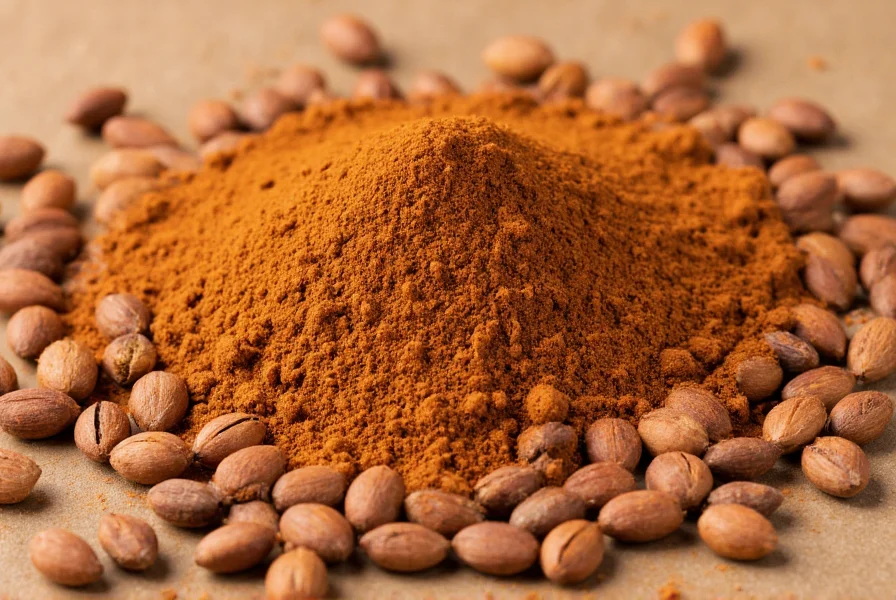Many home cooks and spice enthusiasts wonder is cumin powder spicy when they first encounter this popular seasoning. The confusion often stems from cumin's prominent role in many spicy dishes, particularly in Mexican, Indian, and Middle Eastern cuisines. However, cumin itself doesn't deliver the fiery kick associated with genuinely hot spices.
Understanding Cumin's True Flavor Profile
Cumin powder offers a distinctive flavor that's warm, earthy, and slightly nutty with a subtle citrus undertone. When toasted properly, it develops a rich, almost smoky character that enhances savory dishes. The misconception about cumin powder spice level likely arises because cumin frequently appears alongside genuinely spicy ingredients like chili peppers in spice blends such as chili powder, taco seasoning, and curry powders.
Unlike capsaicin-containing spices, cumin doesn't activate the TRPV1 receptors in your mouth that create the burning sensation we associate with heat. Instead, its intensity comes from its strong aromatic compounds, which can feel pungent to some palates—particularly when used in large quantities—but this is fundamentally different from actual spiciness.
Why People Think Cumin Is Spicy: Common Misconceptions
Several factors contribute to the widespread belief that is cumin considered a spicy spice:
- Association with spicy cuisines—Cumin features prominently in many dishes that also contain genuinely spicy ingredients
- Strong flavor intensity—Its potent earthiness can be mistaken for heat by those unfamiliar with the spice
- Confusion with similar-sounding spices—People sometimes mix up cumin with cayenne or other genuinely hot spices
- Overuse in recipes—Using too much cumin can create an overwhelming sensation that some interpret as spiciness

Cumin vs. Truly Spicy Ingredients: A Flavor Comparison
| Spice/Ingredient | Heat Level (Scoville) | Primary Flavor Notes | Contains Capsaicin? |
|---|---|---|---|
| Cumin powder | 0 SHU | Earthy, warm, nutty, slightly citrusy | No |
| Chili powder (blend) | 500-1,500 SHU | Smoky, spicy, earthy (contains cumin + chilies) | Yes |
| Cayenne pepper | 30,000-50,000 SHU | Sharp, burning heat | Yes |
| Paprika | 0-500 SHU | Sweet, peppery, sometimes smoky | Sometimes (depends on variety) |
How Cumin Functions in Global Cuisines
Chefs worldwide rely on cumin not for heat but for its ability to add depth and complexity to dishes. In Indian cooking, cumin seeds are often tempered in oil to release their aromatic compounds before adding other ingredients. Mexican cuisine uses ground cumin as a foundational flavor in beans, stews, and spice rubs. Middle Eastern dishes incorporate cumin into spice blends like baharat and za'atar.
When exploring does cumin have heat in culinary applications, professional chefs note that cumin's value lies in its ability to enhance other flavors rather than dominate with spiciness. It works particularly well with ingredients like lentils, chickpeas, tomatoes, and grilled meats—complementing rather than overwhelming their natural flavors.
Practical Tips for Cooking with Cumin
Understanding that cumin powder flavor profile doesn't include actual heat allows you to use it more effectively in your cooking:
- Dry toast whole seeds before grinding for maximum flavor (heat in dry pan 2-3 minutes until fragrant)
- Use moderate amounts—cumin's strong flavor can dominate if overused
- Pair with complementary spices like coriander, turmeric, and garlic for balanced flavor profiles
- Add early in cooking for dishes that benefit from its earthiness, or later for more pronounced flavor
- Store properly in airtight container away from light to preserve flavor (ground cumin loses potency faster than seeds)

When Cumin Might Feel Spicy: Individual Sensitivity Factors
While cumin doesn't contain capsaicin, some individuals report a slight warming sensation when consuming it. This could be due to:
- Individual taste sensitivity—some people perceive strong flavors more intensely
- Combined effects—when used with genuinely spicy ingredients, cumin's intensity might be misattributed to heat
- Allergic reactions—rarely, some people experience mild irritation from cumin that might feel spicy
- Quality variations—lower quality cumin blends might contain traces of other spices
For those specifically wondering why does cumin taste spicy to some people, these individual factors likely explain the discrepancy in perception.
Creating Balanced Spice Blends Without Unintended Heat
Knowing that cumin isn't actually spicy allows you to build flavor profiles with greater precision. When developing recipes, consider cumin as a flavor foundation rather than a heat source. This understanding helps prevent the common mistake of reducing cumin when trying to decrease spiciness—when the real culprit is likely another ingredient like chili powder or cayenne.
For those exploring cumin spice level in recipe development, remember that cumin's earthiness actually helps balance and mellow genuine heat from chili peppers, making it an excellent addition to spicy dishes that need complexity beyond simple heat.
Frequently Asked Questions
Is cumin powder spicy like chili powder?
No, cumin powder is not spicy like chili powder. While both are used in similar cuisines, chili powder contains capsaicin from chili peppers that creates actual heat, whereas cumin provides earthy, warm flavor without burning sensation. Most commercial chili powders actually contain cumin as one ingredient among several chili peppers.
Can cumin cause a burning sensation in your mouth?
Cumin does not contain capsaicin, so it shouldn't cause the burning sensation associated with spicy foods. Some people might experience a mild warming sensation due to cumin's strong flavor compounds, but this is fundamentally different from the heat produced by chili peppers. If you experience significant burning from cumin, check if your blend contains other spicy ingredients.
Why is cumin used in so many spicy recipes if it's not spicy?
Cumin is used in spicy recipes because its earthy, warm flavor complements and enhances spicy ingredients without adding heat itself. It provides depth and complexity that balances the sharpness of chili peppers. Many traditional spice blends like chili powder, taco seasoning, and curry powders combine cumin with genuinely spicy ingredients to create layered flavor profiles.
How can I use cumin if I'm sensitive to spicy foods?
Since cumin isn't actually spicy, it's generally safe for those sensitive to heat. Start with small amounts (1/4 to 1/2 teaspoon per dish) to assess your tolerance to its strong flavor. Toasting whole seeds before grinding can mellow its intensity. If you're using pre-made spice blends containing cumin, check labels for other spicy ingredients like chili peppers that might cause discomfort.
What spice is actually spicy that's often confused with cumin?
Cayenne pepper is most commonly confused with cumin due to similar color, though they're completely different. Some people also mistake smoked paprika for cumin. The key difference is that cayenne and hot paprika contain capsaicin that creates actual heat, while cumin provides earthy flavor without burning sensation. Always check labels carefully when purchasing spices to avoid confusion.











 浙公网安备
33010002000092号
浙公网安备
33010002000092号 浙B2-20120091-4
浙B2-20120091-4